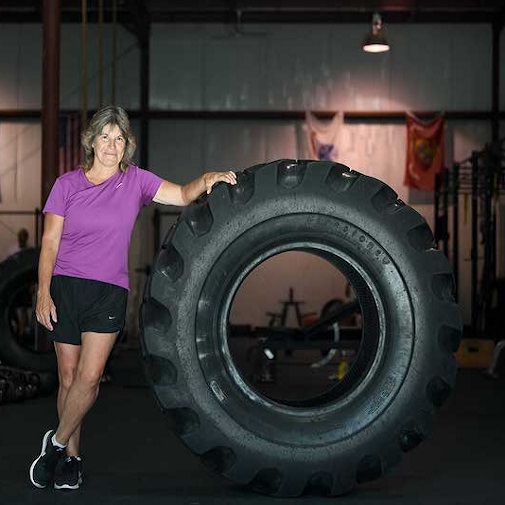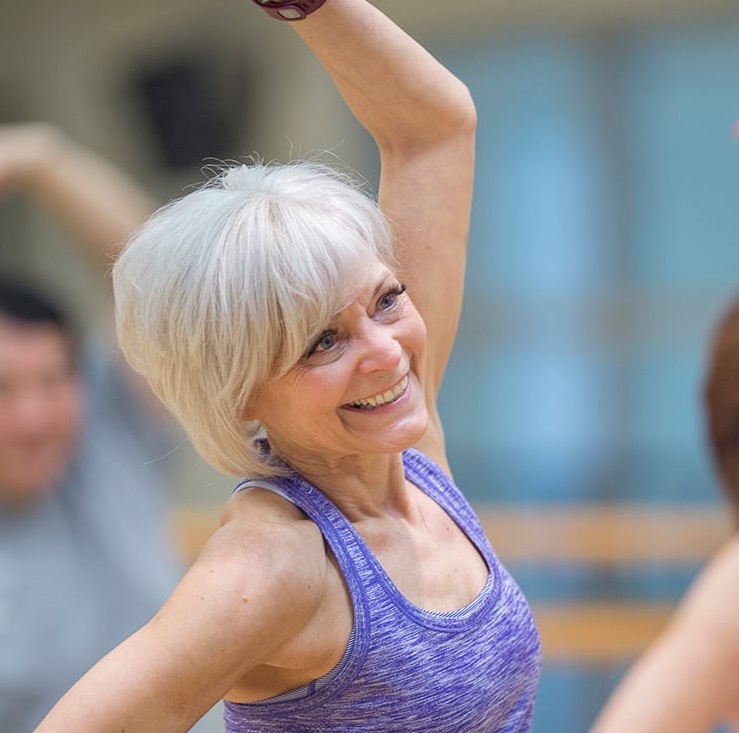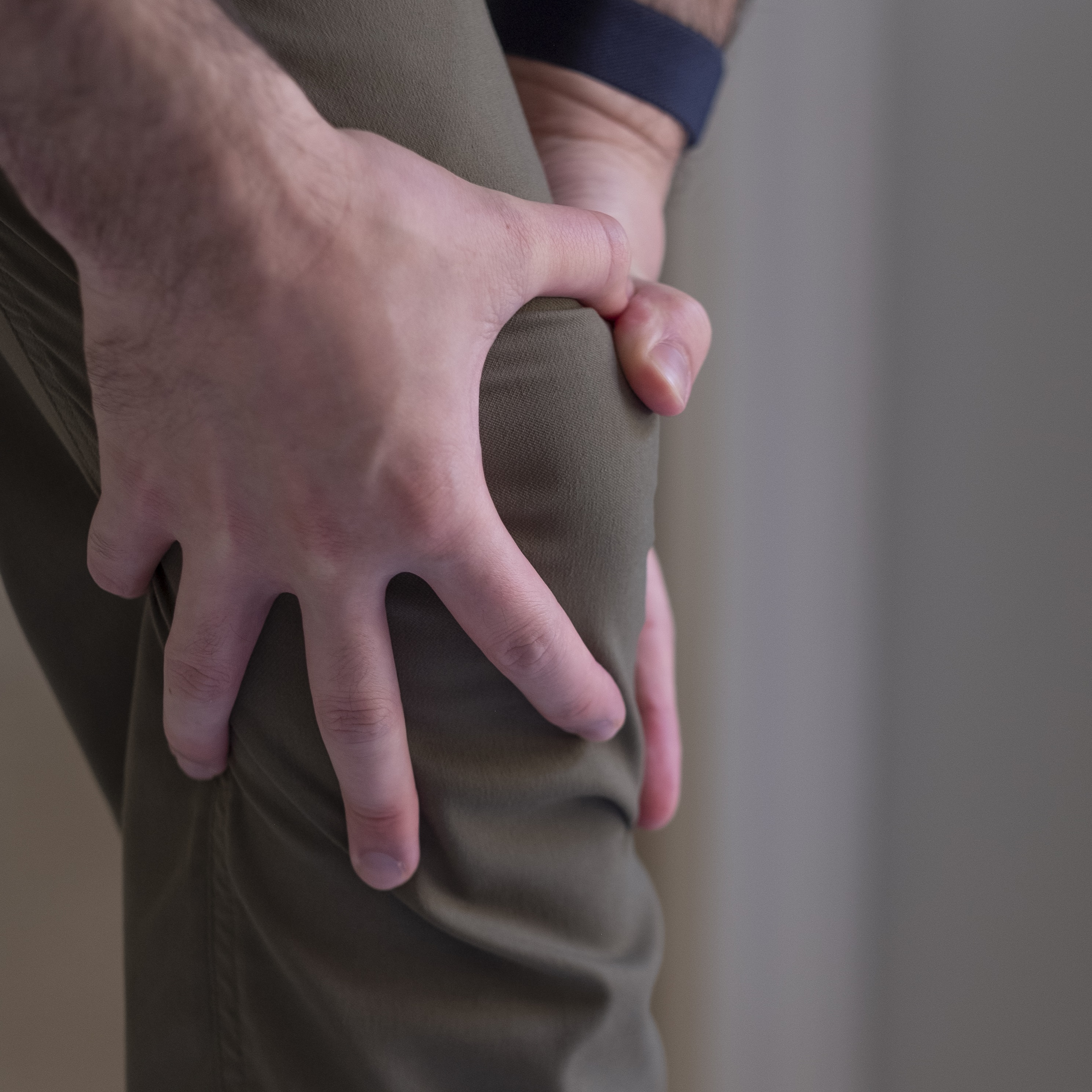Knee Surgery Gets Athlete Back in Action

October 10, 2019
To say that Chrissy Williams, 56, has always led an active life would be an understatement.
This determined mom to twin teen girls went to college on a softball scholarship, played tennis competitively and won seven world titles in arm wrestling.
This enthusiasm and commitment to sports has continued throughout her life. She works out at the gym on a regular basis and is an avid skier, runner and tennis player. But decades of athletic endeavors haven’t been kind to her knees, and in February 2019 she underwent a partial knee replacement surgery, performed by orthopedic surgeon Anthony J. Costa, M.D., at Riverview Medical Center.
A Long Road
As Chrissy puts it, she and Dr. Costa go back a long way. She first met him in 2009 after she tore the meniscus in her left knee and Dr. Costa performed a partial meniscectomy to repair it. A few years later she was back, but this time it was her right knee giving her difficulty, and she tore the meniscus twice.
Treatment included a partial meniscectomy, cortisone injections, physical therapy and modifying her activities, including giving up some of her beloved sports.
But the pain didn’t go away, and it was affecting her daily life. Even things as simple as driving became difficult and painful. “The pain was like a toothache in my knee from the time I woke up to the time I went to sleep,” she says. “I was limping so much that my left hip was starting to hurt. I thought, ‘I can’t keep doing this.’”
Dr. Costa and Chrissy decided it was time for a partial knee replacement. “We exhausted all of the more minimally invasive and conservative measures,” Dr. Costa says. “She’s a real athlete, so she wasn’t able to enjoy her lifestyle with the amount of pain that her knee was causing.”
Two-in-one Surgery
Chrissy’s knee replacement was slightly unusual in that instead of having a full knee replacement or a partial knee replacement, she needed two partial knee replacements. Called a bi-compartmental knee arthroplasty, the surgery included replacing two of the three knee compartments with metal and plastic caps.
Because this essentially meant having two separate procedures done at once, Dr. Costa decided to take a robotic approach using the Mako robotic system. This system uses a 3D virtual model of a patient’s anatomy and a robotic arm to help surgeons plan and perform joint replacement surgery with high accuracy and reproducibility.
“The robotic arm gives us more preoperative measurements and allows us to put in these two compartments very closely, which improves the patient’s outcome,” says Dr. Costa. “It allows for more accuracy when we’re putting in the partial knee replacements.”
Robotic surgery can also decrease soft tissue injury around the knee, which speeds up the healing process and gets patients moving faster.
Because Chrissy was able to avoid a full knee replacement, she also avoided the side effects that can come with it.
With a full knee replacement, the cruciate ligaments, which determine how the knee moves, are affected.
“A very difficult problem for a patient after a total knee replacement is that they lose range of motion,” says Dr. Costa. “With Chrissy, the ligaments were left completely intact. She is not losing her range of motion because her knee is moving in the exact same manner as it moved before the surgery.”
Quick Recovery
Although Chrissy’s surgery was more complex than most, from her perspective it was a simple outpatient procedure. After it was over, she felt no pain—just a slight queasiness in her stomach. Within a few hours she was up and moving.
“They got me standing and doing steps three hours after the surgery,” she says.
Recovery has also been straightforward for Chrissy. She used a walker and cane on the day of surgery but was walking the next day without the aid of either. She worked directly with a physical therapist for about a month and is now continuing the exercises on her own.
This former world champion isn’t someone to sit around resting on the sofa. Two weeks after surgery she was back at the gym (she would have been there sooner, but Dr. Costa asked her to wait until her sutures were out), and in 10 weeks she was running short sprints.
Chrissy has passed her love of sports and fitness on to the next generation. Her twin daughters play travel softball and even sometimes work out with her personal trainer. And now with her new knee, Chrissy is back to chauffeuring them to games in nearby states and coaching them.
“It feels good. I have no pain and I can do everything I want to do,” says Chrissy. “As long as I can run, ride a bike and get out and play with the kids, I’m happy.”
Next Steps & Resources
- Learn how our orthopedic teams are committed to helping you maintain bone and joint health.
The material provided through HealthU is intended to be used as general information only and should not replace the advice of your physician. Always consult your physician for individual care.
Do you have questions or concerns about treating joint pain? Our care team is available to answer your questions and get you back on the move.




